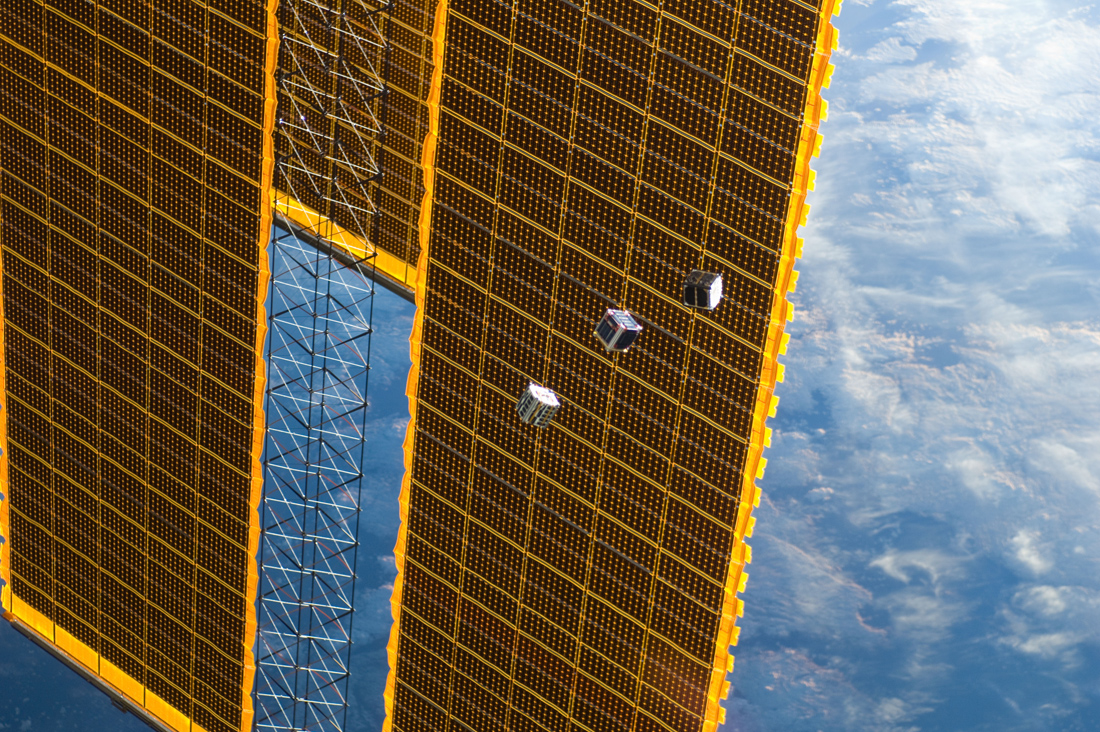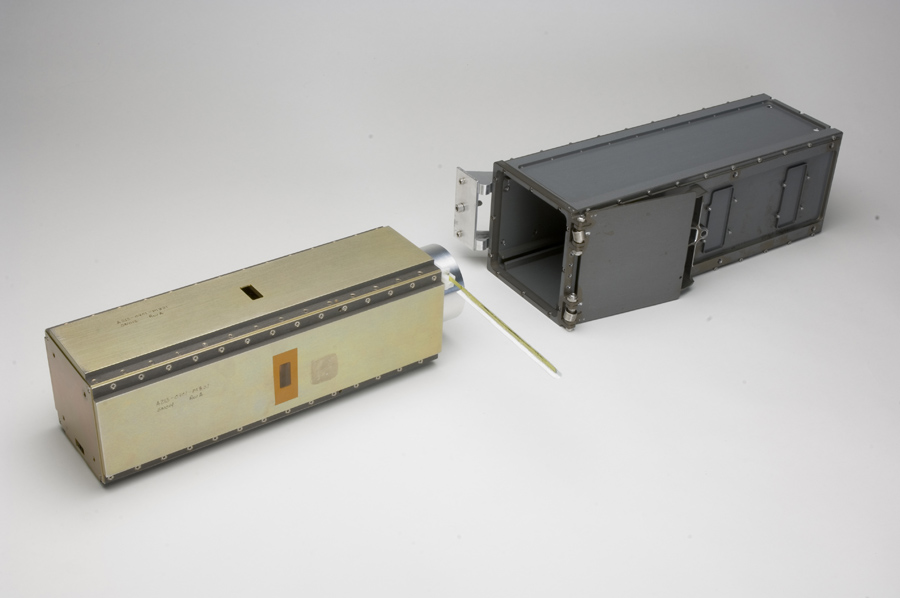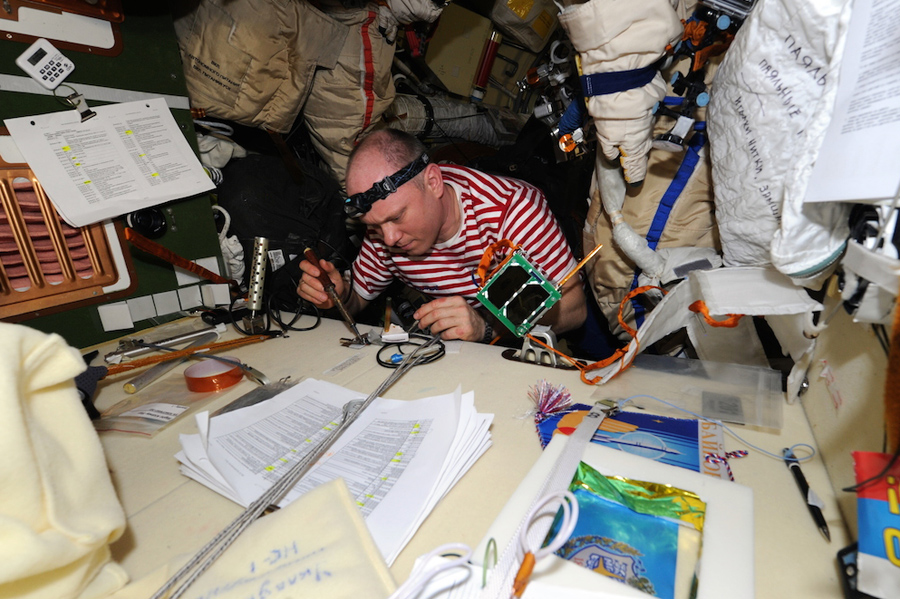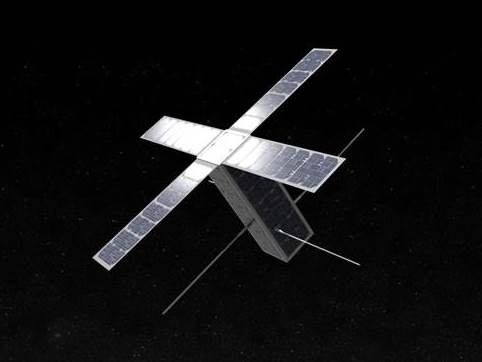When the cubsats got big

CubeSat is a dimensional standard for micro and nanosatellites proposed in 1999 in the USA. Over the past 15 years, the idea of a single standard has greatly changed the face of unmanned astronautics, opened the possibility of relatively inexpensive to create spacecraft to private companies, amateurs, students, even schoolchildren. Thanks to CubeSat, many countries whose budgets did not pull the traditional space program were able to boast of their first spacecraft.
A feature of CubeSat is its fixed dimensions, which change multiple times, i.e. CubeSat 1U (unit) is a 10 × 10 × 10 cm space cube, 2U is already two cubes i.e. 10x10x20 cm, 3U - 10x10x30 cm. So far the reached limit is 6U or 10x20x30 cm. Many structural elements, batteries, boards, sensors, communication systems have been developed under the CubeSat standards ... They constantly come up with something new, either a sublimation engine or an electromagnetic sail, then plasma engine. Cubsats equipped with real solar sails are being prepared for launch.
CubeSat satellites are being created from industrial-grade electronics, i.e. one that is designed for exploitation on Earth, and did not prepare for space. Despite this, the capabilities of modern chips allow them to work in seemingly unsuitable conditions. They can be short-lived, but ensure the operability of the devices up to a year, or even several times more. Now there are entire online electronics stores for CubeSat, although the level of modern computers, which can be purchased in parts and assembled at home in one evening, is still far away. Anyway, you have to carefully test the compatibility of systems, write software, solder, debug, in general, work for several engineers will last for more than one month. All the difficulties were well written by our colleagues from Sputniks.
Despite the difficulties, working with CubeSat is much simpler than in traditional space exploration, and they provided a real breakthrough into space for hundreds of students, dozens of enthusiasts, scientists and businessmen.
The standard dimensions of CubeSat greatly simplify the space launch procedure. The point here is not only in their small size and mass. It is generally believed that it is the mass in kilograms of a satellite that determines its launch cost. But when it comes to such insignificant indicators as 1-3-9 kg, the so-called. adaptation. After all, it’s not enough to fasten the satellite to the rocket, then it is necessary that it shoot at the right time, at the right height and with the right acceleration. For ordinary satellites, even small ones, you have to carry out separate work and design an adapter that will allow you to combine a specific satellite with a specific rocket or upper stage. In the case of CubeSat, the issue is solved by adapting a special container.

It is enough once to carry out the adaptation of the container with a specific rocket or booster block, and then use this scheme during each launch.
For example, in Russia, now the private company Dauria Aerospace together with the NGO named after Lavochkina is working on adapting CubeSat containers to the Frigate interorbital tug .
As a result, it will be easier to withdraw cubes at the same time when launching Roscosmos rockets. Previously, dozens of cubes were launched by the Dnieper conversion Russian-Ukrainian missile, but now Roskosmos is going to refuse it in order to load the work of Russian manufacturers.
There is still the opportunity to launch cubsats from the International Space Station. For this, a special robotic system of the private space company NanoRacks is equipped in the American segment. The system allows you to launch packs of cubsats, while it does not require astronauts to go into outer space.

From the Russian segment, CubeSat are launched individually and in a classic way.

Launching from the ISS solves many problems: it is simpler and cheaper than rockets, it does not require adaptation or even a container. Most CubeSat are launched from the station. But there are problems. The satellites are delivered on board the cargo ships, they can lie down for launch for several weeks or even months, as a result of which the onboard battery can be discharged and the satellite will fly dead. The astronauts fail to resurrect each, although they are trying.

Another problem starting from the station is the short lifetime of the satellite. At the altitude of the ISS, the influence of the Earth’s atmosphere is still relatively slow, so even small cubesats last less than two years, and if the satellite has folding solar panels, then the years do not fly. This pleases everyone who is worried about the purity of space, but upsets the creators of the apparatus, who would like to work longer with the satellite, test the equipment and find out its ultimate capabilities.
A higher and longer-lasting launch requires a container, and finding a suitable rocket. A container costs money, and a lot, although it seems that this is just an aluminum box with a lid. Together with the container, the launch cost for CubeSat can vary from $ 40 thousand to $ 100 thousand and this is only for 1U. But this is an inevitable fee, if there is a goal to launch a satellite, which should work for a long time and with benefit.
Now about the benefits. The first decade of cubsats passed under university banners. Students of one or the other university (for the most part American or British) collected their blocks, Japanese radio fans kept up with them. And in the professional environment about CubeSat there was a stereotype of some kind of frivolous fun that is not compatible with any applied tasks. Indeed, here adult uncles have been collecting apparatuses for a ton or more for years, and there some students rivet kilogram tweeters in a few months.
At the same time, the first generations of cubesats allowed to work out a lot of technological solutions, try dozens of different schemes and layouts, and test payload devices. And by the second decade of the 21st century, it turned out that even such kids are fit for serious work. In fact, a revolution is now taking place before our eyes.
One of the first was Planet Labs, who decided to build the entire business on cubsat. In 2013, they launched a pair of Dove satellites (“Dove”), which showed their capabilities. Their size is 3U, i.e. 10x10x30 cm. In these microscopic, by the standards of astronautics, dimensions, the developers were able to place not only a 90 mm telescope and photomatrix, but also a three-axis orientation system, consisting of three flywheel engines and magnetic coils. It turned out to be a full-fledged remote sensing device for the Earth, the size of an ordinary photo mirror.

Now their devices are making high-quality pictures that you can admire in their gallery .

For comparison, a snapshot of a "real" device weighing 450 kg

Of course, the reliability and performance of the Pigeons is much lower than that of traditional satellites, but their price and the ability to launch in dozens of pieces opens up great prospects. At the same time, the reliability of each new generation increases, because engineers receive a huge amount of data on systems, and can quickly replace unreliable elements. Those. flight tests and testing are carried out much faster than it was with large devices.
Planet Labs has now attracted almost $ 140 million of investments, and now their main task is to build up the ground-based infrastructure and find effective ways to monetize satellite data. Their goal is the daily updated analog of Google maps.
I have already talked about Planet Labs several times, but I prefer another example of a company that grew out of Arduino's circle of fans. First, they kicked off on KickStarter the idea of creating an ArduSat nanosatellite. The community liked the idea so much that when they requested one satellite, they scored two. They attracted attention with their idea of providing satellite control to everyone, for a fee. Even before the launch, after a successful fundraising campaign, they found the first investors. Even the Russian general director and founder of Mail.Ru, Dmitry Grishin, invested in them, though he allocated "only" $ 300 thousand. They did not particularly disseminate on the results of launching and testing satellites, but quickly renamed from NanoSatisfy to Spire and attracted $ 20 million in investments to deploy an entire satellite network. in several dozen devices.
The result will be a fast-updating map of ship movements in the seas and oceans. There are such services now, but basically they work on the basis of coast stations, and AIS satellites in orbit are less than two dozen. Spire wants to launch 100.

Speaking of AIS, there are a couple of our cubesats in orbit - Perseus-M - this is a joint development of the American and Russian divisions of Dauria Aerospace. Our there participated in the development of the overall design, layout and writing software. The satellite size is 6U, the payload is also an AIS sensor, fly since June 2014. Recently, payload testing has just completed, and the satellites have built their own world shipping map. Now we are preparing for the deployment of a network of ground stations in order to start delivering operational data of commercial quality.

However, the goal of Dauria is not an AIS business. Just such sensors were chosen to test the satellite platform. And its possibilities are much greater, including the camera can be put there. Actually, based on the experience gained in Perseus-M development, the Russian division of Dauria is creating two satellites in the CubeSat standard by order of Roscosmos. These are much more complex devices, with a three-axis orientation, a multispectral camera, and a high-performance Ka-band transmitter.
In the future, the company is ready to adapt the platform to various types of workloads for scientific and applied purposes. We are also developing our container, so Roscosmos will soon be able to offer a full range of services if anyone needs to launch CubeSat. For example, the Lavochkin "Frigate" to both Mars and Venus may only need to wait for a passing flight.
The Russian startup “Lin Industrial” undertook to create a special micro-rocket just to launch the Cubsat. It is unlikely that it will be cheaper than $ 100 thousand, but it may be of interest to those orbits where along the way you can’t fly or wait a long time for an opportunity.
More recently , the news camethat one of the developers of the Bitcoin cryptocurrency protocol, Jeff Garzik, became interested in cubsat. Together with Deep Space Industries, he is developing a network of 24 cubsat, which, in his opinion, will become the basis for the interplanetary Internet.

Last year, when bitcoins jumped sharply in price, fears of possible robberies arose. Cryptocurrency keys are stored on traditional storage media that have physical vulnerabilities, then I thought that it would make sense to store money in a
In general, given how drastically reduced the dimensions of storage media, space has every prospect of becoming the base of servers and data centers of almost any size: endless and free energy as a gift. Here the cubsats will be the first to work out the technology of interaction between the ground and space segments.
In general, today more and more work is being done for CubeSat, their capabilities and reliability of components are growing, infrastructure is developing, including in Russia. The commercial application of the CubeSat standard is the result of a creative search, innovative ideas and determination of the initiators of such projects. It is pleasant to realize that our Dauria is not far behind the leaders of applied cubesatology, despite the fact that this is far from the only direction of the company’s work, but this is another story.
PS You can follow the development of CubeSat technology in the CubeSat Vkontakte group .
